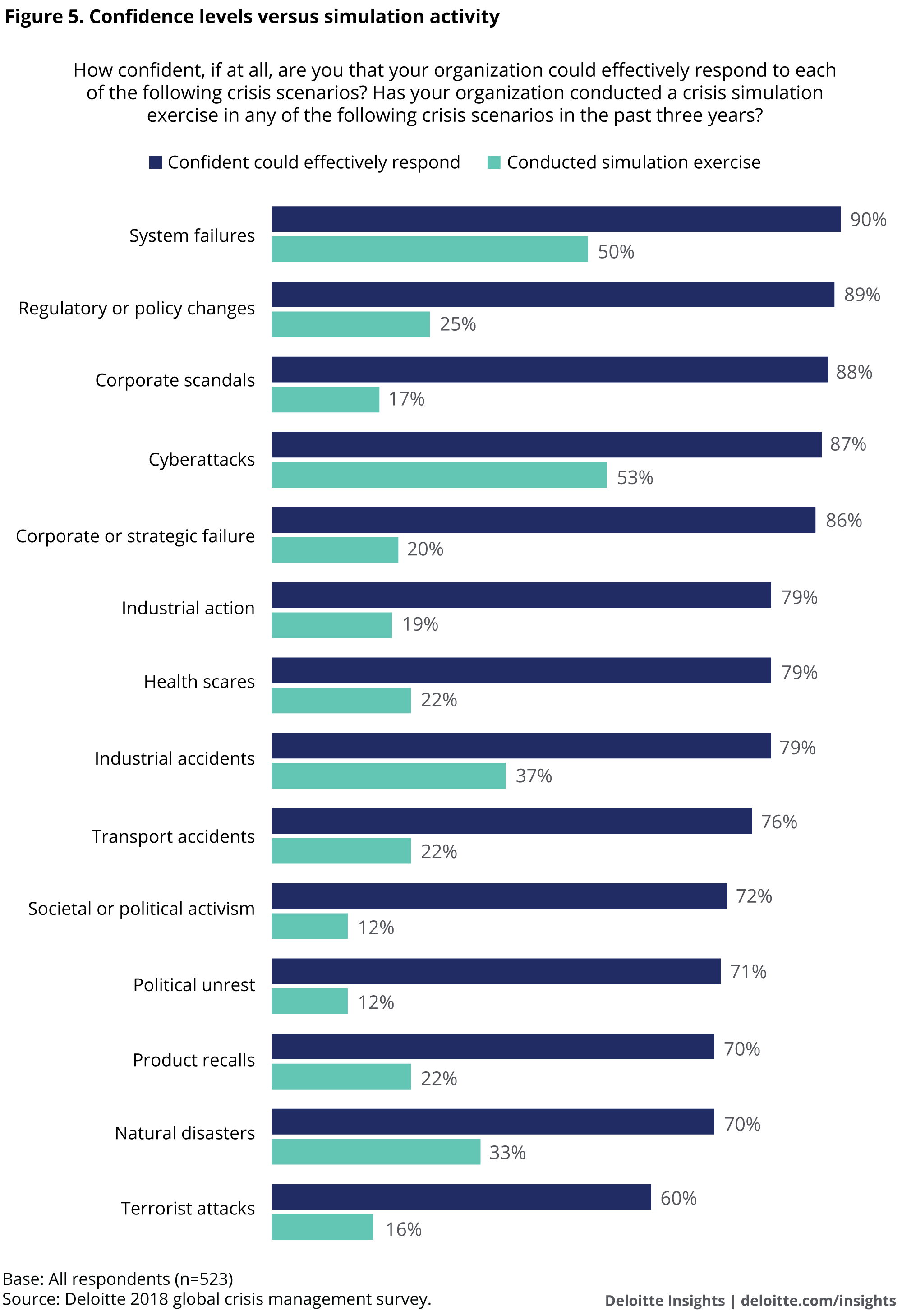What is the cost your organization would pay if you handle a crisis ineffectively?
A crisis like the current corona-virus outbreak?
Well, a few years ago, Volkswagen had to pay an estimated $ 15 billion in court settlements and customer repayments for violating diesel emission norms. The reputation loss caused a further decline in sales, resulting in a net loss of $ 1.84 billion.
The Volkswagen Scandal is not a one-off event, daily headlines are full of organizations mishandling a crisis and paying heavily for it.
Your organization is equally vulnerable.
A hidden crisis, like a data breach or a cyber-attack, maybe slowly brewing to screw-up your customer’s privacy. What if the security measures in your organization fail to protect such sensitive data?
A crisis may also take shape all of a sudden: a terrorist attack or death of an employee at work. What safety plans will you adopt to prevent further damage if this happens?
Your leadership skills face a challenge in such crises. You have limited time to make decisions that may be powerful enough to destabilize your organization. You need to pull up your socks and bring out the best in you.
The internet is full of the best practices for crisis management. However, the more you complicate things, the farther you get from the solution. The following are some basics that you cannot afford to forget in a crisis.
The right time to prepare for a crisis is right now

In his book Crisis Leadership, Tim Johnson writes, “Effective crisis leadership does not start at the moment the crisis occurs. It begins far in advance.”
You need to prepare your organization each day with sound management practices. Strong business values, work ethics, and developing your leadership qualities will help you handle the shock of a crisis effectively.
“By failing to prepare, you are preparing to fail”- Benjamin Franklin.
The following is an example of how Southwest Airlines demonstrated their preparedness to handle an unexpected crisis:
During the 9/11 terrorist attacks, airlines across the US had passengers stranded along with the crew members, and many flights got canceled.
Southwest Airlines always followed a “customer first” approach, their leadership encouraged its employees to take passengers for bowling or movies, instead of merely waiting. Also, in the months after 9/11, they kept all their employees, though up to 20 percent of the staff was cut short by all other airlines.
Southwest CEO James Parker believed that this was possible because the organization always followed sound business principles.
Have you ticked all the boxes of great business practices: An inspiring mission statement, motivated staff, highly skilled management, customer-first approach, safety and security measures in place? Do you have enough preparation for a crisis if it should hit you now?
Think again; more preparation is always possible.
Despite the alarming increase in the number of crises taking a toll on businesses, studies suggest that leaders might be overestimating their preparedness for such situations.
A 2018 Deloitte study finds that “nearly 60 percent of respondents believe that organizations face more crisis today than they did ten years ago, yet many may overestimate their capabilities to respond.”
The following chart represents the difference between the confidence of an organization to respond to a crisis and the actual response during a simulation exercise.

Clearly, there is an overestimation of preparedness for crisis among business leaders. So, what’s the way out?
In addition to sound business practices, what you need is a system that focuses on crisis prevention activities. While you can follow your organization’s guidelines to create such an arrangement, it is suggested to have the following operational and governance structure.
The first step is to identify risks and prepare a crisis management plan that focuses on the vulnerabilities of the risk-prone areas. To make your plan robust, include the risks that aren’t likely to happen. With a plan in place, you have clarity on the points you need to focus on.
The next step is to set accountability in the organization. Form an executive-led crisis management team to supervise your plan. Mark resources that will support them and inform stakeholders about this new communication channel. This team will give the necessary direction to your plan.
Sound business practices and crisis management plans and teams give your preparation a strong foundation. These will help you dilute the pressure from the risks your organization is facing.
Keep in mind that a crisis is inevitable. As Murphy’s law states:
“Anything that can go wrong will go wrong.”
The way you respond in a crisis will decide the degree of damage. This brings us to the next basic step you need to remember in a crisis.
Exhibit Emotional Intelligence during a crisis

Emotions run high during a crisis. You have the fear of failure while making tough decisions. Your instinct is to get away from the situation; this is contagious and causes your subordinates to panic. Thus, you are not only responsible for your emotions but of your team’s as well.
Hence, handling your emotions intelligently, in tough times, is the most crucial step. Remember, you cannot control the crisis but you can control the emotions. Your ability to handle your nerves will decide the consequences.
When you manage emotions with intelligence you have self and social awareness. Well managed emotions give you the much-needed space to form strategies to solve the issues at hand. You are focused on getting to a solution.
“When the going gets tough, the tough get going”– Joseph P. Kennedy.
Let’s look at an example of how the CEO of Starbucks manifested emotional intelligence during a crisis.
Two black men were arrested inside a Starbucks store, although no crime was committed. There was a public outcry of discrimination, and some were calling for the store manager’s job.
Instead of being afraid of the situation and getting away by sacking the store manager, the CEO, Kevin R Johnson, displayed strength and took responsibility.
He said, “There have been some calls for us to take action on the store manager. I believe that blame is misplaced. In fact, I think the focus of fixing this; I own it. This is a management issue, and I am accountable to ensure we address the policy and the practice and the training that led to this outcome.”

Another way to be emotionally intelligent is to not take the crisis personally. This helps in rationally detaching yourself from the situation.
If you are offended by the events, you are likely to respond in an argumentative manner, which can worsen things. You may start blaming your decisions and strategies. It is because of the negativity that creeps during a crisis.
For example, imagine you upgrade the software in your organization to reduce the processing time, and it results in a cyber-attack. If you take this personally, you may say to yourself, “What a stupid move, was an upgrade needed?”
You need to detach yourself from the mishap organically. Remember the Pareto principle:
“80% of consequences come from 20% of the causes“.
You do not always have control over which side of the equation your decisions will turn out to be. The cyber-attack might be because of a system security miss and would have happened otherwise as well. The 20% cause, in this case, did not include your decision to upgrade the software.
By approaching the crisis with emotional intelligence, you will be able to concentrate on the actual cause rather than blaming yourself. Have a positive mindset; this will help you inspire a shared vision: ‘getting back to normal’ which is the aim of all stakeholders involved.
Once you are in control of your emotions, the next step is to solve the crisis. For this, you need planning and execution strategies. This is how you can do this:
Formulate and execute a quick plan

It is vital that you make a quick plan to handle a crisis. A plan will help you analyze what’s wrong and set its correction course.
Once you have a plan in place, you need to act promptly and execute it.
Let’s understand with an example – When Donald Sterling, the owner of Los Angeles Clippers, an NBA team, passed racist comments that were recorded and leaked on a website, the CEO of NBA, Adam Silver had a crisis on his plate.
The following are the steps of formulating and executing a plan, and how Adam followed them.
The first step is to check the facts: Gather all the information related to the crisis. Getting a clear view of the situation on the ground will help you identify and attend to what’s critical.
Adam did not jump to conclusions right away. He waited for an expert to confirm that the voice recorded was indeed that of Sterling. If he had made a decision without confirmation, it would have been disastrous in case the voice was not of the owner.
The next step is to identify the people affected and communicate that you are working on a solution. This list may involve families, hospitals, suppliers, and distributors depending on the crisis.
Adam made sure that the playoffs went ahead as per schedule. He did a brief press conference and let everyone know that he and his team were working on the controversy. And then he ensured the players took to court, and that there was no interruption in the playoff schedule.
The last step is to identify and execute measures to correct what’s gone wrong. You may need to sack officials, call-back a product, or reach out to the victims, depending on the crisis.
Upon confirmation of the voice belonging to Sterling, Adam came down hard on Sterling, ordering him out of the team’s business, imposing a lifetime ban and a $ 2.5 million fine. Adam later said, “The act that we took led to a much broader societal discussion about how comments like that should be treated, comments outside of the workplace.”
Executing a good plan helps you swiftly make a decision that is fair for all the stakeholders.
Conclusion
A crisis can change quickly. Hence there is no one way to handle it. However, the basics mentioned in this article apply to all crises for all kinds of leadership styles. Developing a culture in your organization that can handle a crisis is as important as the formula.
If you have already faced a crisis, the learning from it can be a great way to prepare for the future. If you have not, it’s time you learn from others’ learning.
Business & Finance Articles on Business 2 Community
(84)
Report Post







